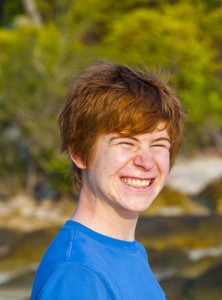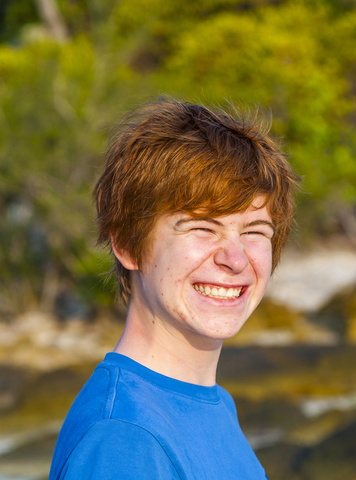 Specialists Warn that Rosacea Symptoms and Triggers are Common in Children and Teenagers – Rosacea is Not Exclusive to Adults as Once Thought
Specialists Warn that Rosacea Symptoms and Triggers are Common in Children and Teenagers – Rosacea is Not Exclusive to Adults as Once Thought
What is Rosacea?
Rosacea is a progressive vascular disorder that affects the facial skin and eyes. It usually begins quite innocently as a mild flush across the nose, cheeks, chin and forehead. During the early stages, this flush comes and goes, seeming to have a mind of its own. As the disorder progresses, facial redness becomes more intense, taking on the appearance of mild sunburn or windburn. In areas of facial redness, tiny broken blood vessels and red bumps may also become visible. In the moderate to severe stages, facial inflammation usually intensifies, resulting in permanent redness, swelling and burning sensation. In the most advanced cases, rosacea can cause facial disfigurement and disabling burning sensations.
General Confusion Over Rosacea and Age of Onset
If one actively reads the medical literature, journal articles or pharmaceutical pamphlets on rosacea it is clear that the primary care physicians and general dermatologists believe that rosacea only affects males and females in their 30’s, 40’s, 50’s and 60’s. In other words, this disorder only affects adults later in life; however rosacea specialists warn that this is not the case, and in fact, often affects children, teenagers and young adults. Rosacea symptoms and triggers can be as severe as adult rosacea, but this younger population is often misdiagnosed and under-treated. In 2012, 2013 and early 2014 over a dozen publications in peer-reviewed medical journal articles and editorials have been published on this subject in order to educate general physicians so that they can treat rosacea at its earliest stages, in young rosacea sufferers, when it is much easier to reverse and put into remission.
In 2013, multiple peer-reviewed journal articles and editorials in the Journal, “International Clinics in Dermatology”, have brought this information to the forefront. Experts in the rosacea field stress that children, pre-teens, teenagers and young adults often exhibit moderate-to-severe rosacea symptoms, yet are often over-looked, misdiagnosed or mistreated as another inflammatory skin disorder.
In summary, young rosacea sufferers often present with:
- Papules and pustules
- Chronic facial redness (erythema, skin blotchiness, isolated red patches of skin)
- Broken blood vessels (telangiectasia)
- Flushing and blushing
- Burning and stinging sensations
- Eye problems including itching, scratching, redness and dry eye
- Numerous rosacea triggers
Misconceptions About Rosacea Can Lead to Misdiagnosis and Treatment In Children and Teens:
- The papules and pustules are erroneously treated as pure acne eruptions
- The chronic facial redness is simply classified as “a skin rash”
- The broken blood vessels are simply ignored and told they will disappear on their own
- The flushing and blushing, no matter how intense, is simply written off as a genetic disorder without an effective treatment
- The eye problems are usually diagnosed as “an allergic ocular reaction” and “dry eye syndrome”
- The rosacea triggers are often not even addressed or physicians simply tell their young patients “to avoid these triggers”. Most physicians don’t know the extent of these rosacea triggers or the effect on quality of life and often times the young rosacea sufferers don’t present the triggers in depth or with accuracy…. Which makes it harder for the physician to address
The Problem with Rosacea Trigger Analysis in Children, Teenagers and Young Adults
- It’s extremely hard for adults to effectively list and explain rosacea triggers to professionals in a normal 15 minute examination…. It’s nearly impossible for pre-teens and teens to accurately depict their triggers, the duration of each trigger and the intensity of the triggers. Thus, this often goes completely ignored or is presented in a fashion that minimizes the problem
- Even when rosacea triggers are presented, most general physicians do not know how to treat them and don’t realize that safe, effective treatments exist such as laser treatment, oral blood vessel stabilizers like Rosadyn™ and angiogenesis inhibitors (blood vessel growth inhibitors) like Rosadyn™ and Angiostop™
Specialists Emphasize that General Physicians Should be on the Lookout for Rosacea Triggers and Pre-Rosacea Flushing in Order to Start Treatment Immediately – Specialists are usually the Ones to Detect these Early Rosacea Signs Due to their Expertise and Time Allotted to their Rosacea Patients
- After in-depth interviews with numerous rosacea sufferers, Dr. Klaber and Wittkower found that most of their patients had flushed since childhood.
- Dr. Nagasaka and colleagues indicate that many of their rosacea patients experienced facial flushing and blushing during their childhood years and that these episodes were often intense and long-lasting.
- Dr. Panconesi reported that many of his rosacea patients experienced facial flushing during their childhood and teenage years.
- Consistent with the above reports, Drs. Drolet and Paller documented severe facial flushing and blushing in very young children, often as early as 3 to 5 years of age.
- Dr. Weimer states, “The early flush in adolescence and young adulthood is a definite marker for the development of rosacea.”
- Rosacea experts warn, “The healthy-looking glow that appears in many rosacea sufferers in their teens and early 20’s can actually be an early sign of rosacea.”
- Dr. Donshik and colleagues warn that the exaggerated flush response is the first clinical sign of rosacea, and that it can be present much earlier in life than general physicians think, “Appearing in the late teens and early 20’s.”
What is the Best, Safest Course of Treatment for Young Rosacea Sufferers?
While it is an excellent start for experts to publish about the misconceptions of early-onset rosacea and educate both the physician and patient, young patients can start treatment at almost any age.
- Like adults, begin to journal flare ups and redness: are there certain foods, environmental factors that seem to trigger a flare up? Seeing a rosacea like pattern will help you to see if its acne, rosacea helping you to arrive at an diagnosis plus treatment plan. Plus, knowing flare up triggers will help you to avoid them.
- All rosacea sufferers should wear micronized zinc oxide or titanium dioxide-based sunscreens out in the sun.
- Diagnosed with Rosacea: Avoid harsh cleansers and acne treatments containing salicylic acid, glycolic acid, malic acid, grapefruit extract and retinol. There are better, more effective treatment options for rosacea sufferers. Acne skin care products can further agitate rosacea skin and actually progress the disorder.
- Try to limit your exposure to harsh elements such as extreme cold and heat
- If you blush or flush often and intensely, there are several prescription treatments that can be used at “micro-dose” concentrations to reduce this reaction. Please discuss a treatment strategy with your physician.
- Low-dose doxycycline is now an option for rosacea sufferers over the age of five. Please discuss the benefits and any possible adverse reaction with your physician that might occur before beginning this treatment.
- Laser treatments may be an option. Vascular laser treatment on children, teens and young adults is a safe and effective way to treat many rosacea symptoms.
- Supplementation with vascular system supportive nutrients and anti-inflammatory with quality nutrient diet can go a long way in helping rosacea sufferers but also help with general all over health and wellness.
Rosacea is not age discriminatory children to adults accurate diagnosis and management is the key.
Article by; Rosadyn an oral nutraceutical was developed to reduce rosacea symptoms and triggers that can be safely used by young rosacea sufferers. It is germane to emphasize that one of the core underlying causes of almost all symptoms and triggers is uncontrolled angiogenesis (inflammation-induced blood vessel overgrowth) and that Rosadyn has three of the strongest angiogenesis inhibitors on the market. This is one of the best treatments to reduce, and even reverse, rosacea at its core.

